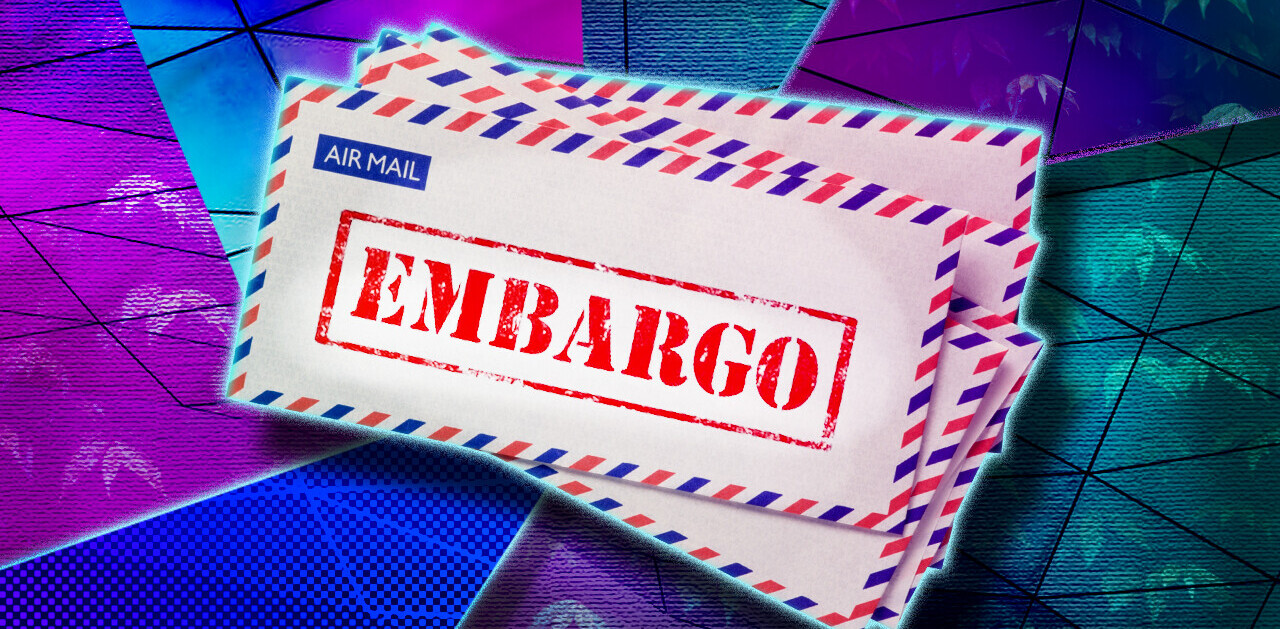One thing most businesses and services should focus on is perfecting customer retention rates — be that retail, dog-grooming, or media sites.
However, some companies forget that the customer relationship doesn’t end after they’ve made their first purchase, in fact, this is where the relationship actually begins. According to research by Riskified, a software and analysis company, not only does a third of the overall money spent online come from returning customers, but they also spend nearly three times more than one-time shoppers.
To Paddy Muckian, the Irish egg farmer shown in the video above, gaining new customers and retaining old ones meant extending his shop’s opening times. So he invented the very first egg vending machine, allowing customers to buy eggs whenever they want.
Don’t have an inventor’s mind? There are easier methods to boost customer retention. We’ve compiled a list of smart ways to keep your customers coming back, time and time again.
#1. Scrap the rewards system
First off, let’s scrap the obvious and over-used strategy of keeping your customers; the rewards system.
It’s not 2008 anymore and chances are, thanks to the world wide web, there’s another company just a click away that could give a better price for their service or product. Rewards systems, like loyalty points and freebies in exchange from allegiance, are failing to keep customers engaged. Despite major retailers investing tens of millions of dollars a year into loyalty programs, they’re a dying breed.
According to research by the Queensland University of Technology in 2014, customers struggle to find the benefits of signing up the reward schemes for discounts and upgrades.
Why? Well, according to the researchers behind the paper, Dr Hasan said: “Shoppers are realizing that a loyalty program provides the same benefits, discounts and communications to all members and you are not treated any differently than the tens of thousands, if not hundreds of thousands, of other members.”
So, you need proof? Last year, ASOS, the online fashion retailer, scrapped it’s three-year long “ASOS A-List” loyalty program after it saw only a small number of people “absolutely engaged.” The decision to pull its rewards system saw the retailer take a £2.7m write-down — money that’s being spent elsewhere for company growth.
#2. Know which customers you actually want to keep
Depending on what industry you’re in, acquiring a new customer is anywhere from five to 25 times more expensive than retaining an existing one, according to a study Harvard Business Review (HBR) on the value of keeping the right customers.
Now, we know that sounds like a lot, but think about it because it actually makes sense: that’s less time, money, and resources spent on acquisition strategies. Research on “Cutting Costs” by Frederick Reichheld, a business strategist, backs this theory up as he found that increasing customer retention rates by 5 percent increases profits by 25 percent to 95 percent.
With all these stats in mind, it really does make sense to focus efforts on your existing, loyal customers. However, this doesn’t mean your whole marketing plan has to change. Once your company has a loyal demographic, and you’ve spent time getting to know them, figure out what they like and what their lifestyle looks like. Once you have this knowledge under your belt, you can pinpoint your marketing budget to others just like them.
Another method to understanding customer retention and finding out who yours are is a formula known as the ‘Customer Churn’ metric. This calculation is a percentage of customers that stopped using your company’s product or service during a certain time period. To calculate your stats, divide the number of customers you lost during that time frame — for example, a quarter — by the number of customers you had at the beginning of the time period.
#3. Don’t neglect your employees’ job satisfaction
Maybe this is something you didn’t think to consider when talking about customer retention. However, a study by the University of Missouri-Columbia in 2011 found that CEOs who pay attention to employee’s job satisfaction are able to boost both customer satisfaction and repurchase intentions, or the number of customers that intend to purchase products from the store.
“The link between customer satisfaction and customer loyalty is almost twice as strong when you have high employee satisfaction compared to when they are not satisfied with their jobs,” Christopher Groening, a researcher behind this study said. “This double-positive finding stands in contrast to the idea that a firm can neglect to satisfy their employees as long as they pursue customer satisfaction.”
Researchers of this study recommend companies to “train and empower employees so they have the tools to make decisions. This allows them to make decisions that are beneficial for the company and each individual customer — instead of following a simple flowchart and possibly upsetting a customer with the final outcome.”
Furthermore, the key to employee satisfaction is having strong mentors and a good working atmosphere that offers incentives or intangible benefits, such as flexible working hours, if possible.
Groening admits in his research that these examples are common sense, but “they can be very difficult to maintain.”
#4. Engage with your customers like they’re human
Just like we reminded you in the first point, it’s not 2008 and for companies to stay relevant, they need a strong tone of voice across social media platforms.
Having active profiles on core social channels like Facebook, Instagram, and Twitter also heavily relates to really knowing your customer demographic. Facebook posts, Instagram updates, and tweets give a relatable voice to your brand — after all, a company without a voice, is a robot.
Although social media is used in many cases to acquire new customers, it should also be used to retain your current customer-base. To build long-lasting relationships with your current customers, you need to publish content that is valuable to your audience and not too over-promotional. Transparency, honesty, and authenticity are what engage customers, according to research by Entrepreneur Europe in 2016.
There are hundreds of brands out there already doing an impressive job with social media. Take Missguided, an online fashion retailer, which uses Instagram to reach its core demographic and currently boasts 4.3 million followers. Missguided’s Instagram page harnesses every feature the platform has to offer to keep its customers engaged in more than just shopping the site — from Instagram Highlights of fashion tutorials to IGTV (a feature on Instagram that allows for longer videos) of how to style its clothing.
#5. Why not introduce a newsletter?
Not only is it incredibly easy to launch and manage a company newsletter, it’s also a simple and cost-effective way to retain your customers. Using email automation is the easiest way to stay in touch with your customers by keeping them up to date on the latest developments in your business, including sales, new product or service offerings, and seasonal deals.
A newsletter is a personal touch from a company, adding to point four about the importance of being relevant and relatable to your customer base. Not only does a weekly, or even monthly, newsletter help solidify your relationship with your customers, it’s an easy solution for them to get in touch with you and a way to increase your online visibility in general.
Email marketing has been proven reliable in acquisition and more so for customer retention. According to Adobe’s consumer email report in 2017, despite the fact that there are countless digital platforms out there, people still opt to check their email at least every few hours. The study also found 61 percent of those that own a smartphone in the US would like to be contacted by brands through email, however, their stated preference is for marketing emails that are less about promotions, and more about providing information.
#6. Never over-promise
You’ll find something in common about maintaining successful customer retention and that’s honesty. Being honest, authentic, and transparent with your customer makes for a trusting relationship, and this includes not over-promising expectations to your customer base.
Over-promising and under-delivering is the first step to ruining your relationship with customers or clients. But, what does this mean exactly? So, be as accurate as possible on promotional offers, timescales, and product descriptions — at the end of the day, in most cases, you need the customer more than the customer actually needs you.
According to a study by Emerald Insight in 2017, a scholarly publisher of academic journals and books, under-promising and over-delivering improve customer satisfaction, thus the likeliness of them returning for your company’s product or service. Whereas, a company focusing on acquisition through over-promising to customer or clients typically results in one-time purchases.
#7. Ditch the emoji in customer service
Finally, customer retention ultimately has everything to do with the quality of your customer service. To put it plainly, if a customer can’t easily get in touch or have their issue solved painlessly, they won’t buy your product or use your service again, as chances are, they’ll go to your competitor.
But what does good customer service look like, you ask? Well, is it free? Is it easily accessible like live chat, an email address, or social channels? Do you reply within a day? And does your company have a friendly tone of voice? If yes, you’re doing the right thing, according to HBR.
Until earlier this year, virtually no research has examined the role of emoji in business to customer (B2C) relationships, and the small amount of research that had been done, found mixed, contradicting results. However, a report by Oxford Academic published earlier this year on how customers interpret emoticons in online service, found that customers perceive companies that use emoticons as higher in warmth but lower in competence compared to those who do not.
Although common sense has you believing that customer acquisition outweighs customer retention every time, since after all, the more customers, the better, right?
No, if this list has taught you anything, it’s that keeping loyal customers happy is better for business. Losing customers is simply too expensive since the average, research by Neil Patel, an SEO company found that the global value of a lost customer is $243.
Get the TNW newsletter
Get the most important tech news in your inbox each week.






